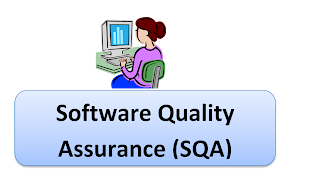Software Quality Assurance in software engineering

On this blog you can post about most of the engineering related topics in very simple language. It computer science programs or management systems. Can read and understand in very easy language. Here you can know the code of different types of programs. You can learn about different computer languages. And you will also get information related to the operating system here. All you have to do is one click and your questions will be answered immediately. All about learning and knowledge provide...

The spiral model is a risk driven software development process model.
Based on unique
risk patterns of given project, the spiral model guides a team to adopt
elements of one more process model such as waterfall model or evolutionary
prototype. This model was first described by “Barry Bohem” in is 1986 paper.
The spiral is a sequence of waterfall increment. The spiral model for software
engineering has been developed to couples the best feature of both the
classical life cycle & prototype model in this model software is developed
in series of incremental relies, Which may be paper model or prototype model.
The spiral
life cycle model is one of the most flexible SDLC model in place. Development
can be determined by the project manager according to the complexity of the
project.
Project monitoring
is very easy & effective. Each phase as well as each use require a review
from concerned people this makes the model more transparent. Risk management is
one of inbuilt feature of the model which makes it extra attractive as compared
to other models. Changes can be introduced letter in the life cycle is a very
big headache for the project manager.
Spiral
model is divided into a number of frame work activities also called task
reason. Typically there are 3 to 6 reason that are shown in figure –
The reason identified on the task that effective communication
between & users.
Task related to determinations of objective alternative & constrains.
It identified technical management risk.
Development of next level project or product.
Task required constructing testing, Installing & providing
users support is define in the reason.
Task required to obtain result of engineering at customer level.
Comments
Post a Comment